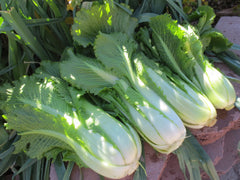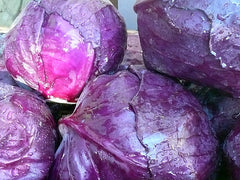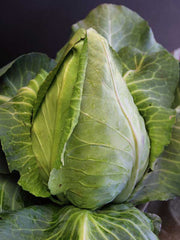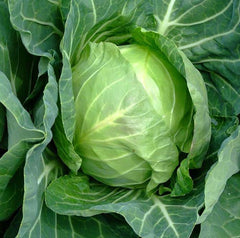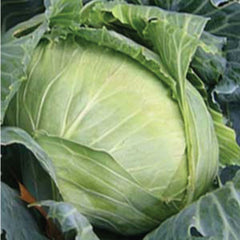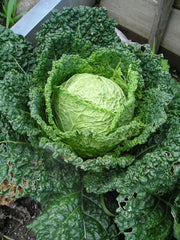Kyoto No. 3 chinese cabbage
HOW TO GROW CHINESE CABBAGE
Prefers cool temperatures for its main growing season, likes decreasing temperatures and day lengths. Tends to bolt if temperature or light increases. The optimum temperature for Chinese cabbage to be able to head is at least 58- 62˚ƒ. The Plants must become big enough to be ready to form a head within 40–50 days after sowing. Transplant 16 weeks before first frost for storage types, 13 weeks for fresh types, without additional protection. In a hoophouse, you can plant 2-3 weeks later. Drought sensitive, mature heads are vulnerable to splitting under stress from rain following a dry spell, keep moisture even. Fragile leaves when young, space well if mechanically cultivating. Harvest time is fall to early winter. Mature when the tight head leaf begins to fold back on itself. Soil pH 6–7.5. Hardiness zones 5-9. Biennial.
Days from maturity calculated from the date of seeding. Average 8,000–11,000 seeds per ounce. Average 66M seeds per acre. Federal germination standard: 75%. Usual seed life: 4 years.
Planting Depth 1/4–1/2”
Soil Temp. Germ. 50-75˚F
Days to Germ. 10-15
Plant Spacing 12–18”
Row Spacing 18–30”
Days To Maturity 80–95
Full Sun, Moist Well Drained Soil
Days from maturity calculated from the date of seeding. Average 8,000–11,000 seeds per ounce. Average 66M seeds per acre. Federal germination standard: 75%. Usual seed life: 4 years.
Planting Depth 1/4–1/2”
Soil Temp. Germ. 50-75˚F
Days to Germ. 10-15
Plant Spacing 12–18”
Row Spacing 18–30”
Days To Maturity 80–95
Full Sun, Moist Well Drained Soil
- 100 Seeds$4.10
- 1000 Seeds$12.50
- 1 Ounce$28.00
A Japanese heirloom or dento yasai variety of Japan with bright green leaves and a yellow white heart. Cabbages mature to a whopping 6-7 lbs under favorable conditions. Highly regarded by chefs and consumers alike for their superior appearance, taste and texture. It is sweeter and more concentrated in flavor than th...
A Japanese heirloom or dento yasai variety of Japan with bright green leaves and a yellow white heart. Cabbages mature to a whopping 6-7 lbs under favorable conditions. Highly regarded by chefs and consumers alike for their superior appearance, taste and texture. It is sweeter and more concentrated in flavor than the California Napa Cabbage. Vitamins and minerals in Chinese cabbage are vitamin C, K, A, phosphorus, calcium and potassium. Tags: Color: Green, Size: Large, Heritage: Heirloom, Season: Spring Fall, Certification: Organic.
Learn More
Meet Your Farmer
We promote fair trade, organic practices and environmental responsibility throughout the Restoration Seeds supply chain. Below are the family farmers and seed suppliers who bring our open pollinated seeds to you.
Feral Farm
Certified Organic by CCOF
Seed grower since 2015


I started growing seed commercially as an apprentice at the Organic Farm School in the Puget Sound in Washington. I already loved growing vegetables, but taking a plant all the way through its life cycle felt like a special kind of honor, and I quickly saw the value in sustaining organic, important, and rare plant varieties and participating in sustainable food systems in this way. I moved to Oregon in 2015 and have been growing my organic seed farming business over the last four seasons by renting land from existing farms and slowly taking on higher volumes and more varieties. I’m currently growing 1.6 acres of certified organic seed crops and heirloom garlic.
Reviews
